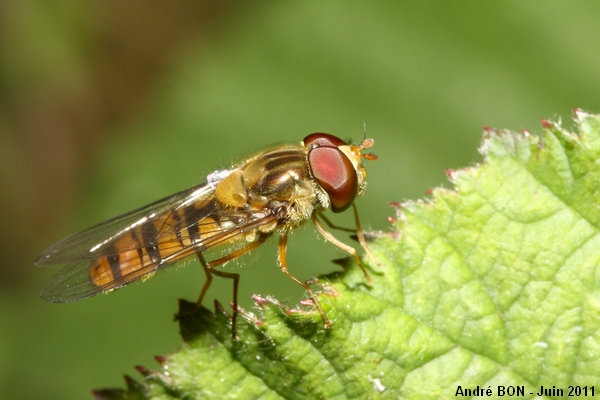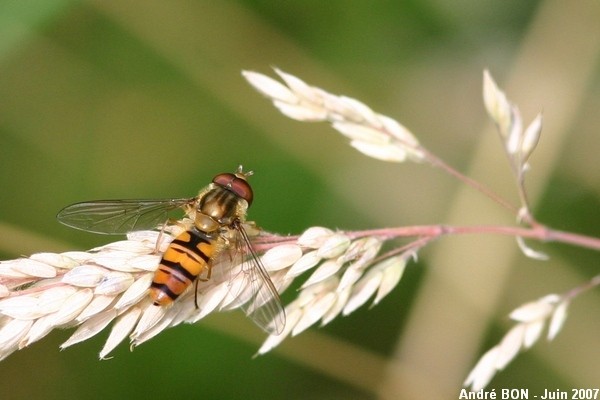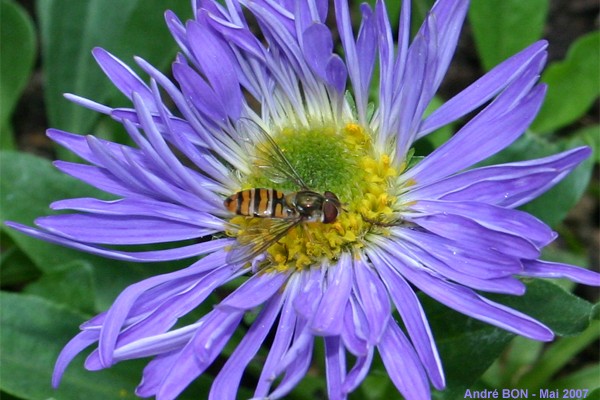





| Marmalade Hoverfly (Episyrphus balteatus (DeGeer, 1776)) |






|
|
Scientific name: Episyrphus balteatus (DeGeer, 1776) Common name: Marmalade Hoverfly French name: Syrphe ceinturé Order: Diptera Family: Syrphidae Wingspan : 8 to 12 mm. Biotope: Every habitat, from parks and gardens to large forests, with a preference to the proximity of pines. Larvae are carnivorous and feed on aphids. Adults feed on pollen and nectar. Geographic area: Europe, Asia. Some insects move to southern Europe or North Africa in winter and fly back at the hot season. Migrations are sometimes done by dense swarms. Observation period : April to October (all year long in the Mediterranean areas). |
The Marmalade Hoverfly shows three orange black-bordered bars on the abdomen. The first one is divided in two parts. The 3rd and 4th dorsal plates of the abdomen show two thin black lines which are a reliable key for identification. The identification can be confirmed by faint grey longitudinal stripes on the thorax. This is a harmless insect. It flies very quickly and you can often see it doing a stationary flight. The Marmalade Hoverfly has the appearance of a wasp. |
| [To know more about the Marmalade Hoverfly] [Next picture] [Top] |

|
Among all observed hoverflies, Marmalade Hoverflies are the most numerous. The eyes, touching on the upper side, indicate a male. Females have well separated eyes. |
| [To know more about the Marmalade Hoverfly] [Next picture] [Previous picture] [Top] |

|
The well separated eyes indicate a female. |
| [To know more about the Marmalade Hoverfly] [Next picture] [Previous picture] [Top] |

|
Though the wings are held over the abdomen, the thin black lines on segment 3 and 4 are quite visible by transparency. This confirms the Marmalade Hoverfly species. |
| [To know more about the Marmalade Hoverfly] [Next picture] [Previous picture] [Top] |

|
I shot this picture while I was looking for butterflies near a woodland edge. |
| [To know more about the Marmalade Hoverfly] [Next picture] [Previous picture] [Top] |

|
I have planted Alpine Asters in my garden to attract butterflies. This Marmalade Hoverfly is the first visitor. |
| [To know more about the Marmalade Hoverfly] [Previous picture] [Top] |

|
I am used to observing many Marmalade Hoverflies in stationary flight. I have adjusted my camera, with flash on, on a predetermined focus distance. I moved here and there, with the eye stuck on the viewfinder, and I pressed on the shutter button as soon as a Marmalade Hoverfly appeared sharp in the picture. The wing beat is so fast that the wings are not frozen but the very brief flash light. |